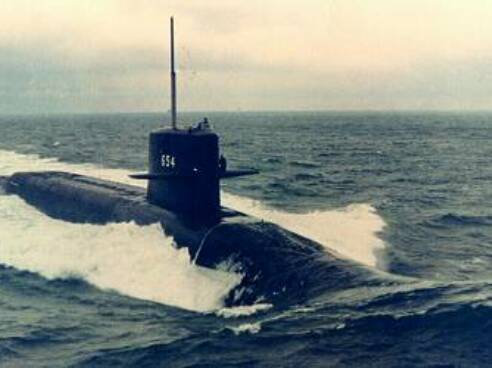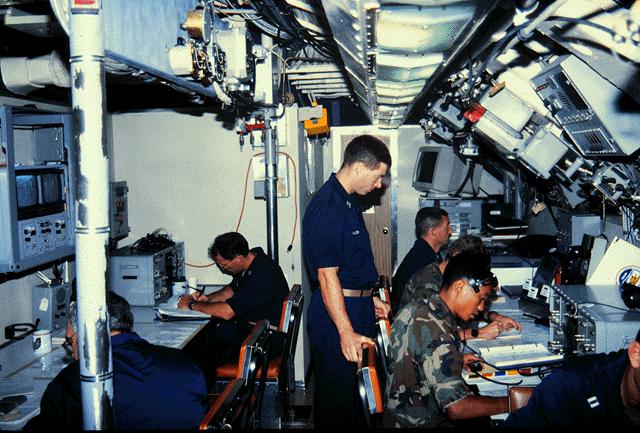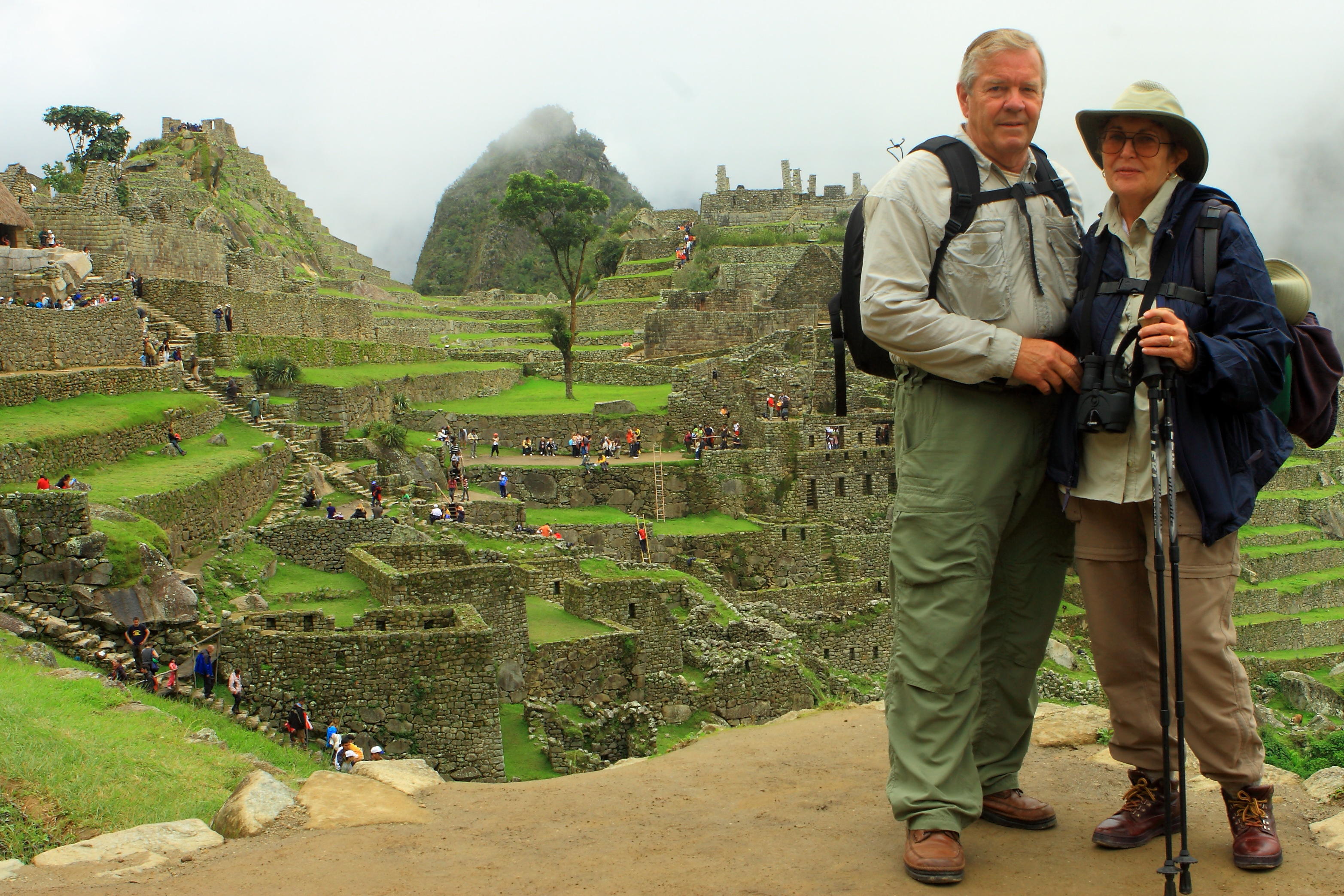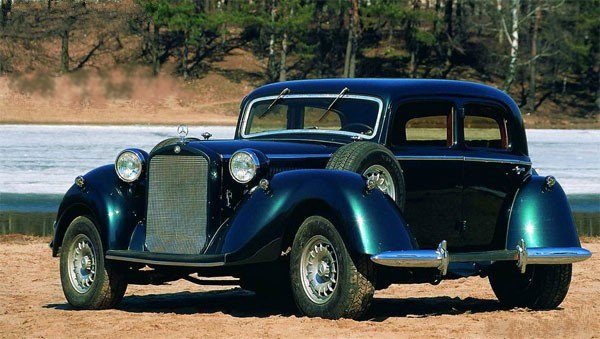Biographical Sketches and Photos Supplied by '60 Classmates
ON THIS PAGE
Click an entry to go to:
Vol. 50, No. 1 FERN CREEK, KENTUCKY - Location of Friendliest School in the County October 3, 2010
 The County Recreation Youth Association (CRYA) was the dream child of Mr. Charlie Vetner, an employee (head of Recreation, maybe) of the City of Louisville. The CRYA offered a pan-county experience for teenagers with varying degrees of talent, to produce a variety show (called CHUCKLES) in the late spring, after practicing all winter in the armory in downtown Louisville.
The County Recreation Youth Association (CRYA) was the dream child of Mr. Charlie Vetner, an employee (head of Recreation, maybe) of the City of Louisville. The CRYA offered a pan-county experience for teenagers with varying degrees of talent, to produce a variety show (called CHUCKLES) in the late spring, after practicing all winter in the armory in downtown Louisville.
 I, with a lower degree of expertise, played cello in the orchestra. The proceeds from ticket sales paid for a trip during the summer. Each traveling member of the CHUCKLES show was called a Youth Ambassador, because we sometimes traveled to foreign countries and represented the teens of Jefferson County.
I, with a lower degree of expertise, played cello in the orchestra. The proceeds from ticket sales paid for a trip during the summer. Each traveling member of the CHUCKLES show was called a Youth Ambassador, because we sometimes traveled to foreign countries and represented the teens of Jefferson County.
 There were trips to Cuba (before Castro took over), two to Canada, one to Mexico and two to Kentucky Lake (foreign enough at that time) that I remember. I participated in trips to Mexico, Kentucky Lake and Canada. We 50 to 75 kids and had a really good time with all of them. It was during the trip to Chatham, Ontario that I met Canadian Alice O'Rourke, my wife of 47 years, at a dance sponsored by her church.
There were trips to Cuba (before Castro took over), two to Canada, one to Mexico and two to Kentucky Lake (foreign enough at that time) that I remember. I participated in trips to Mexico, Kentucky Lake and Canada. We 50 to 75 kids and had a really good time with all of them. It was during the trip to Chatham, Ontario that I met Canadian Alice O'Rourke, my wife of 47 years, at a dance sponsored by her church.
 I enlisted in the Navy after a bad educational experience at UK, swearing to never go to school again. Naturally, after boot camp, I was sent to schools for the next eight months.
I enlisted in the Navy after a bad educational experience at UK, swearing to never go to school again. Naturally, after boot camp, I was sent to schools for the next eight months.
 My first assignment was the USS Clamagore, SS343. Then, back to school at the Nuclear Power School and Prototype, for the next year and a half, where I trained as a mechanical operator and water chemistry technician.
My first assignment was the USS Clamagore, SS343. Then, back to school at the Nuclear Power School and Prototype, for the next year and a half, where I trained as a mechanical operator and water chemistry technician.
 Alice and I were married while at the prototype in New York state. Orders came on April 1, 1964 that we were headed west (way west) to the USS Swordfish SSN579 in Pearl Harbor.
Alice and I were married while at the prototype in New York state. Orders came on April 1, 1964 that we were headed west (way west) to the USS Swordfish SSN579 in Pearl Harbor. 
 Elizabeth, our firstborn came three days before a 100 day deployment. A year later we got orders to the USS Sturgeon SSN637, under construction at Electric Boat in Groton, CT.
Elizabeth, our firstborn came three days before a 100 day deployment. A year later we got orders to the USS Sturgeon SSN637, under construction at Electric Boat in Groton, CT. 
 Rachel, our next daughter was a last minute tax deduction in '65. While on the Sturgeon, I was accepted into the NESEP (Navy Enlisted Scientific Education Program - all acronyms aren't bad) and was trucked off to Milwaukee for four years of college.
Rachel, our next daughter was a last minute tax deduction in '65. While on the Sturgeon, I was accepted into the NESEP (Navy Enlisted Scientific Education Program - all acronyms aren't bad) and was trucked off to Milwaukee for four years of college.
 David, Jr. was born our first year at Marquette University, which was really good for study. With BSME and MS degrees in hand, I was commissioned an Ensign in 1970 and, after declining Nuclear School for officers, was assigned to the USS Tusk SS428, then again went to Submarine School (for officers this time) in Groton, CT.
David, Jr. was born our first year at Marquette University, which was really good for study. With BSME and MS degrees in hand, I was commissioned an Ensign in 1970 and, after declining Nuclear School for officers, was assigned to the USS Tusk SS428, then again went to Submarine School (for officers this time) in Groton, CT.
 There was a succession of missile boats after that: USS Thomas Edison SSBN610, USS Lafayette SSBN616, and the USS George C. Marshall SSBN654. My assignments were Assistant Weapons Officer, Weapons Officer, and Navigation/Operations Officer, respectively. I loved going to sea and operating those submarines.
There was a succession of missile boats after that: USS Thomas Edison SSBN610, USS Lafayette SSBN616, and the USS George C. Marshall SSBN654. My assignments were Assistant Weapons Officer, Weapons Officer, and Navigation/Operations Officer, respectively. I loved going to sea and operating those submarines.
 The Nav/Ops tour was especially rewarding. I got orders for shore duty at the Office of Naval Research in London, England and vowed to participate in family life as much as possible while there. In three years, I spent more Navy travel funds than anyone else and wrote about the technology that might relate to the submarine or surface shop communities. I took family along as much as possible.
The Nav/Ops tour was especially rewarding. I got orders for shore duty at the Office of Naval Research in London, England and vowed to participate in family life as much as possible while there. In three years, I spent more Navy travel funds than anyone else and wrote about the technology that might relate to the submarine or surface shop communities. I took family along as much as possible.
 I retired from the Navy in June 1984. We felt at home here so I joined Electric Board in Groton, Connecticut. I engineered various piping and ventilation systems on the Trident, Seawolf and Virginia class submarines.
I retired from the Navy in June 1984. We felt at home here so I joined Electric Board in Groton, Connecticut. I engineered various piping and ventilation systems on the Trident, Seawolf and Virginia class submarines.
 We retired again in April, 2002, with the aim of seeing all of North America. We still need to visit Newfoundland, the Northwest Territories and Alaska. We’re working on it.
We retired again in April, 2002, with the aim of seeing all of North America. We still need to visit Newfoundland, the Northwest Territories and Alaska. We’re working on it.
 I’ve been our town’s Conservation Commissioner for 11 years. As chairman, we initiated a change to the subdivision regulations to preserve farms and expand open space available to the public through “Smart Development.”
I’ve been our town’s Conservation Commissioner for 11 years. As chairman, we initiated a change to the subdivision regulations to preserve farms and expand open space available to the public through “Smart Development.”
 We initiated annual hazardous waste collection for our small corner of the state, which includes us and ten surrounding towns. After rewriting the open space section of our town’s Plan of Conservation and Development, a three-town cooperative effort to establish connecting walking/biking trails is gaining momentum.
We initiated annual hazardous waste collection for our small corner of the state, which includes us and ten surrounding towns. After rewriting the open space section of our town’s Plan of Conservation and Development, a three-town cooperative effort to establish connecting walking/biking trails is gaining momentum.
 Elizabeth is a graduate of Bryn Mawr. With her Ph.D. she has become a research scientist in botany at the University of Munich, Germany. She is married with two children.
Elizabeth is a graduate of Bryn Mawr. With her Ph.D. she has become a research scientist in botany at the University of Munich, Germany. She is married with two children.
 Rachael is a graduate of St. John’s College (the Sante Fe campus) and resides with her husband and four children in Brookfield, Vermont. She is home schools the children, who range in age from 5 to 17.
Rachael is a graduate of St. John’s College (the Sante Fe campus) and resides with her husband and four children in Brookfield, Vermont. She is home schools the children, who range in age from 5 to 17.
 David, Jr., is an architect, with a degree from Carnegie Mellon, and has done graduate work in Lausanne and Biel, Switzerland. He was an architect in Germany, Switzerland and France. He is single and lives in Salem, Oregon.
David, Jr., is an architect, with a degree from Carnegie Mellon, and has done graduate work in Lausanne and Biel, Switzerland. He was an architect in Germany, Switzerland and France. He is single and lives in Salem, Oregon.
Submitted by David Schroeder
Left, the USS George C. Marshall, a nuclear submarine
on which David served as Navigator/Operations Officer
David Schroeder made the Navy his career, both as an enlisted man
and a commissioned officer. Following that, his second career was
with one of the Navy's largest contractors.
Alice and David Schroeder
While still a student at Fern Creek, Trevor Hughes was serving his country as a member of the Navy Reserve. He enlisted in 1959 and, after his junior year, he spent part of the summer attending Navy boot camp.
 After graduation, Trevor transferred from the reserves to active duty and began attending Navy schools. First, there was another 16 weeks of basic training, then training as a machinist mate, finishing at submarine school, making him one of two submariners in the Class of ’60, the other being David Schroeder.
After graduation, Trevor transferred from the reserves to active duty and began attending Navy schools. First, there was another 16 weeks of basic training, then training as a machinist mate, finishing at submarine school, making him one of two submariners in the Class of ’60, the other being David Schroeder.
 Trevor’s first underwater assignment was the USS Rasher, a famous World War II diesel attack submarine, which sank the second most tonnage of any submarine in that war. After his tour on the Rasher, he was sent to the Navy Nuclear Power School in Vallejo, California, following which he went to the Knolls Atomic Power Laboratory in New York, for further training and subsequent assignment as an instructor.
Trevor’s first underwater assignment was the USS Rasher, a famous World War II diesel attack submarine, which sank the second most tonnage of any submarine in that war. After his tour on the Rasher, he was sent to the Navy Nuclear Power School in Vallejo, California, following which he went to the Knolls Atomic Power Laboratory in New York, for further training and subsequent assignment as an instructor.
Trevor Hughes embraced the sea while still a student at Fern Creek. After graduation, he embarked on a 40-year career of service to his country as a submariner and a Coast Guard officer. Now, having developed an insatiable wanderlust, he and his wife Verna travel full time.
As told to Jim Sullins
Trevor and Verna in January 2010, while visiting Machu Picchu, Peru. The Machu Picchu ruins are at an elevation of 7,700 feet and are accessible only by the train they rode, or by hiking the Inca Trail, a distance of 45 miles. The peak in the background is Huayna Picchu. Machu Picchu consists of over 300 stone houses and 50 other buildings, including several temples.
Moto-Taxi's are very popular transportation in Peru. They're the most common public transportation outside major cities. Trevor and Verna took this ride in Monsefu, Peru.
 In 1962, amid his military excitement, Trevor married Pat Anderson a classmate in the Class of ’60. Trevor and Pat had two children and remained married until 1983, when they divorced. Pat is now Pat Anderson Beckman.
In 1962, amid his military excitement, Trevor married Pat Anderson a classmate in the Class of ’60. Trevor and Pat had two children and remained married until 1983, when they divorced. Pat is now Pat Anderson Beckman.
 For his next sea duty, Trevor was assigned to the commissioning crew of the USS Alexander Hamilton, a nuclear powered missile submarine on which he made nine patrols. It was during this time that being away from his family for long periods caused Trevor to leave the Navy after 13 years of service. He hated that he was a stranger to his daughter, even when she was two years old.
For his next sea duty, Trevor was assigned to the commissioning crew of the USS Alexander Hamilton, a nuclear powered missile submarine on which he made nine patrols. It was during this time that being away from his family for long periods caused Trevor to leave the Navy after 13 years of service. He hated that he was a stranger to his daughter, even when she was two years old.
 Trevor found work in the private sector and his new employer assigned him to Missouri. While there, he enrolled in the University of Central Missouri, eventually graduating magna cum laude, with a BS in engineering. Missing the military somewhat, he also enlisted in the Coast Guard Reserve.
Trevor found work in the private sector and his new employer assigned him to Missouri. While there, he enrolled in the University of Central Missouri, eventually graduating magna cum laude, with a BS in engineering. Missing the military somewhat, he also enlisted in the Coast Guard Reserve.
 Trevor eventually received a commission in the Coast Guard, returned to active duty and retired a Commander. Most of his duty was in Charleston, South Carolina. His final assignment was in Huntington, West Virginia, as a marine safety officer on the Ohio River. Trevor had just completed work on a ‘terrorist risk matrix’ program, which he found in wide use following 9-11.
Trevor eventually received a commission in the Coast Guard, returned to active duty and retired a Commander. Most of his duty was in Charleston, South Carolina. His final assignment was in Huntington, West Virginia, as a marine safety officer on the Ohio River. Trevor had just completed work on a ‘terrorist risk matrix’ program, which he found in wide use following 9-11.
 Trevor retired from the Coast Guard in 2002, having served his country 40 years, a feat quite remarkable in today’s military. He did 15-25, spending five more years in the Coast Guard.
Trevor retired from the Coast Guard in 2002, having served his country 40 years, a feat quite remarkable in today’s military. He did 15-25, spending five more years in the Coast Guard.
 In 2002, Trevor and Verna, who brought three children to the extended family, sold their home and joined America’s band of motor coach gypsies, traveling continually, feeding the wanderlust a military career sometimes creates. They’ll be traveling to the 50th reunion in their 45-foot motor coach and will feel right at home.
In 2002, Trevor and Verna, who brought three children to the extended family, sold their home and joined America’s band of motor coach gypsies, traveling continually, feeding the wanderlust a military career sometimes creates. They’ll be traveling to the 50th reunion in their 45-foot motor coach and will feel right at home.

In 1977, on the evening of my 35th birthday, there was an unusually large, orange full moon. I wondered what sort of omen it would have been in earlier times and hoped that it wouldn't impact me, but it did.
 Two days later, I was driving home from work and decided to take the route that put me on River Road. I was working at an art gallery near the Watterson and US 42.
Two days later, I was driving home from work and decided to take the route that put me on River Road. I was working at an art gallery near the Watterson and US 42.
 I was driving west on River Road and a young man, new to driving, was going north on a side street. The youngster decided to make a right turn, to go east on River Road; but, he didn't make a tight turn, went out of his lane into mine and we hit head on. I was going approximately 45-50 mph. He had been hot rodding and was easily going 35-40 mph.
I was driving west on River Road and a young man, new to driving, was going north on a side street. The youngster decided to make a right turn, to go east on River Road; but, he didn't make a tight turn, went out of his lane into mine and we hit head on. I was going approximately 45-50 mph. He had been hot rodding and was easily going 35-40 mph.
 Bang!
Bang!
 An interesting thing about accidents like this is that most people remember little about the crash. I recall nothing of the few seconds between realizing we were about to hit and when the cars came to a rest, with mine off the side of the road. I had been driving with my left arm out the window and no seat belt. My left side was a sheet of pain – broken pelvis, nose and left arm in ten places.
An interesting thing about accidents like this is that most people remember little about the crash. I recall nothing of the few seconds between realizing we were about to hit and when the cars came to a rest, with mine off the side of the road. I had been driving with my left arm out the window and no seat belt. My left side was a sheet of pain – broken pelvis, nose and left arm in ten places.
 Altogether, I was in the hospital twice, for a total of 10 days. Thankfully, I had no invasive surgery, but did endure a year's rehabilitation. Today, my left arm doesn't function properly.
Altogether, I was in the hospital twice, for a total of 10 days. Thankfully, I had no invasive surgery, but did endure a year's rehabilitation. Today, my left arm doesn't function properly.
 The accident brought me to grips with a life changing decision. Should I continue pursuing typical, traditional career-type jobs, or should I enjoy life, by surrounding myself with beauty?
The accident brought me to grips with a life changing decision. Should I continue pursuing typical, traditional career-type jobs, or should I enjoy life, by surrounding myself with beauty?
 This was about the time Jimmy Carter was attempting to shift “policy” from foreign oil to locally produced energies, yet another wild and useless gesture at energy independence. Figuring that any push into coal would make Kentucky's air even worse than it was in 1977, I decided on a move west. We’re fortunate that Kentucky’s air is far better now than then.
This was about the time Jimmy Carter was attempting to shift “policy” from foreign oil to locally produced energies, yet another wild and useless gesture at energy independence. Figuring that any push into coal would make Kentucky's air even worse than it was in 1977, I decided on a move west. We’re fortunate that Kentucky’s air is far better now than then.
 I sold virtually everything, hooked a small trailer behind my Pinto wagon and moved to Lake Tahoe. The natural beauty there is truly astounding; but, you better like snow if you live there. An overnight snowfall of 3-4 feet is normal. One year, we had 4-inches of snow on the 4th of July. The downside of living in Lake Tahoe, unless you are wealthy, is job availability. Casinos are the primary source of jobs; so, I became a Blackjack dealer.
I sold virtually everything, hooked a small trailer behind my Pinto wagon and moved to Lake Tahoe. The natural beauty there is truly astounding; but, you better like snow if you live there. An overnight snowfall of 3-4 feet is normal. One year, we had 4-inches of snow on the 4th of July. The downside of living in Lake Tahoe, unless you are wealthy, is job availability. Casinos are the primary source of jobs; so, I became a Blackjack dealer.
 It didn’t take long for me to grow weary of spending 8-12 hours a day standing at a gaming table, bent slightly at the waist, breathing second-hand cigarette smoke. I decided to shift careers. Checking into a college in Incline Village, Nevada, I discovered the relatively new solar energy engineering degree, which helped me decide on a four-year program in alternative energies.
It didn’t take long for me to grow weary of spending 8-12 hours a day standing at a gaming table, bent slightly at the waist, breathing second-hand cigarette smoke. I decided to shift careers. Checking into a college in Incline Village, Nevada, I discovered the relatively new solar energy engineering degree, which helped me decide on a four-year program in alternative energies.
 There was a small, private college outside Grand Rapids, Michigan with a similar program. While investigating that school, the dean offered me a teaching position, which would pay the costs of attending, so I was off to Grand Rapids.
There was a small, private college outside Grand Rapids, Michigan with a similar program. While investigating that school, the dean offered me a teaching position, which would pay the costs of attending, so I was off to Grand Rapids.
 A week after enrolling and paying my tuition, the dean was fired. Of course, there was no record of the job offer and I ran out of money after one semester.
A week after enrolling and paying my tuition, the dean was fired. Of course, there was no record of the job offer and I ran out of money after one semester.
 Since Michigan wasn't especially attractive in the severe recession of 1983, I decided to move to Colorado. I spent 17 years on the western slope of the Rockies, in the small tourist town of Glenwood Springs, located about half way between Aspen and Vale.
Since Michigan wasn't especially attractive in the severe recession of 1983, I decided to move to Colorado. I spent 17 years on the western slope of the Rockies, in the small tourist town of Glenwood Springs, located about half way between Aspen and Vale.
 After watching my Glenwood home's value increase nearly 300%, I decided to sell, take the equity and move on. I was leaving Colorado because it had become too expensive; so, where to go?
After watching my Glenwood home's value increase nearly 300%, I decided to sell, take the equity and move on. I was leaving Colorado because it had become too expensive; so, where to go?
 A dear friend was a great believer in the I Ching. I asked her to ask the I Ching where I should move: Kentucky or Grand Junction, Colorado. I was skeptical of the I Ching, because it is never definitive, or even easily understood. Leni, my I Ching reading friend said she'd never seen it so unequivocal. It said clearly: go to Kentucky, because a move to Grand Junction was ill-advised.
A dear friend was a great believer in the I Ching. I asked her to ask the I Ching where I should move: Kentucky or Grand Junction, Colorado. I was skeptical of the I Ching, because it is never definitive, or even easily understood. Leni, my I Ching reading friend said she'd never seen it so unequivocal. It said clearly: go to Kentucky, because a move to Grand Junction was ill-advised.
 I moved back to Kentucky, bought a duplex and worked as a career coach; that is, until the company ceased operations in 2005. As a career coach I witnessed the difficulties people in their 60s have finding employment. While not impossible, it’s challenging and usually requires good networking connections. Besides, I reached the point where spending my days staring at a computer screen was no longer attractive.
I moved back to Kentucky, bought a duplex and worked as a career coach; that is, until the company ceased operations in 2005. As a career coach I witnessed the difficulties people in their 60s have finding employment. While not impossible, it’s challenging and usually requires good networking connections. Besides, I reached the point where spending my days staring at a computer screen was no longer attractive.
 I sold the duplex, spent half a year helping family members with home remodeling projects and then bought a small place in Green County. The house had recently undergone extensive repair work and was move-in ready, though it needed a little more repair.
I sold the duplex, spent half a year helping family members with home remodeling projects and then bought a small place in Green County. The house had recently undergone extensive repair work and was move-in ready, though it needed a little more repair.
 My goal was to become a garlic and ginger farmer. That way, I would be outside much of the time, getting valuable vitamin D sunshine. I’d be able to “give back” to humanity (yeah, I know that sounds a bit 'cosmic', but my motives are genuine).
My goal was to become a garlic and ginger farmer. That way, I would be outside much of the time, getting valuable vitamin D sunshine. I’d be able to “give back” to humanity (yeah, I know that sounds a bit 'cosmic', but my motives are genuine).
 I've discovered that ginger is very difficult to grow and that garlic would do better in a colder climate, but, I soldiered on and will be planting my fourth garlic crop in about a month.
I've discovered that ginger is very difficult to grow and that garlic would do better in a colder climate, but, I soldiered on and will be planting my fourth garlic crop in about a month.
 The crop this year is disappointing. The combination of extreme heat, drought and my health issues, which kept me indoors in the cool air, led to a crop that, while edible, doesn't appear attractive.
The crop this year is disappointing. The combination of extreme heat, drought and my health issues, which kept me indoors in the cool air, led to a crop that, while edible, doesn't appear attractive.
 There are three leaves/wrappers around the garlic head/bulb. For a grower, the objective is to retain at least one, preferably two, of these wrappers, in preparation for selling. I was able to pull the Lorz Italian variety out of the ground before the heat hit and it’s in pretty good shape. The balance of the crop is a question mark. (This is where he stopped. Ed.)
There are three leaves/wrappers around the garlic head/bulb. For a grower, the objective is to retain at least one, preferably two, of these wrappers, in preparation for selling. I was able to pull the Lorz Italian variety out of the ground before the heat hit and it’s in pretty good shape. The balance of the crop is a question mark. (This is where he stopped. Ed.)
Submitted by Ron Carr
Ron Carr didn't submit a photo, so we're using this
picture of a strange car that he posted on Facebook.
A crash on River Road led Ron Carr to become a ginger and garlic farmer. Here's what happened in between.
Vivian Feese remembers bus rides, sleep overs and rebuilding
her life in Fern Creek
Clockwise from top left, Tom Smith, Vivian Feese Smith, Chardonnay and Maxie, pose just before their big family arrives for a Christmas gathering.
 My friends Sallie Hughes, Joyce Hinderer and I started at Fern Creek in the 7th grade. We grew up in Buechel, 4-5 miles north of 'downtown' Fern Creek.
My friends Sallie Hughes, Joyce Hinderer and I started at Fern Creek in the 7th grade. We grew up in Buechel, 4-5 miles north of 'downtown' Fern Creek.
 It was our unique school bus route that stands out in my memory, which started for us at the Buechel By-pass. The route continued on to Bashford Manor Lane, Newburg Road, Trevilion Way, across Bardstown Road, out Taylorsville Road, past Bowman Field to Hikes Lane, then back to Bardstown Road, where we turned left and headed to FCHS.
It was our unique school bus route that stands out in my memory, which started for us at the Buechel By-pass. The route continued on to Bashford Manor Lane, Newburg Road, Trevilion Way, across Bardstown Road, out Taylorsville Road, past Bowman Field to Hikes Lane, then back to Bardstown Road, where we turned left and headed to FCHS.
 Today’s parents complain about long routes like that. Then, we didn't know better. In fact, it was a fun time to catch up on the latest gossip, share homework, flirt or plan our next sleep over.
Today’s parents complain about long routes like that. Then, we didn't know better. In fact, it was a fun time to catch up on the latest gossip, share homework, flirt or plan our next sleep over.
 When we had a sleep over planned, Peggy Snow, Janice Deeb, Paula Doll and others would get off at my stop, stay over, ride my horse and gossip and giggle all night. In turn, I could get off at their stops, stay over, go to the Bard Theater, swim at Lakeside and gossip and giggle all night.
When we had a sleep over planned, Peggy Snow, Janice Deeb, Paula Doll and others would get off at my stop, stay over, ride my horse and gossip and giggle all night. In turn, I could get off at their stops, stay over, go to the Bard Theater, swim at Lakeside and gossip and giggle all night.
 When my brother started driving, as often as we could we talked Dad into letting us borrow the family car. We would get up very early, drive Dad to work, go back home, dress for school and drive to school. We felt like “big shots.” After school, we’d reverse the process, to go get Dad.
When my brother started driving, as often as we could we talked Dad into letting us borrow the family car. We would get up very early, drive Dad to work, go back home, dress for school and drive to school. We felt like “big shots.” After school, we’d reverse the process, to go get Dad.
 We didn't realize how tolerant our parents were, or how that tolerance was being strained when we occasionally returned the car with a few dents or scrapes caused by a speaker or tray from Jerry's, the Ranch House or the Skyway. Wasn't gas about $.25 a gallon then?
We didn't realize how tolerant our parents were, or how that tolerance was being strained when we occasionally returned the car with a few dents or scrapes caused by a speaker or tray from Jerry's, the Ranch House or the Skyway. Wasn't gas about $.25 a gallon then?
 Fern Creek continued to be a part of my life when, after a difficult divorce, my daughter Regina and I returned there to live. Regina went to Fern Creek Elementary and I worked full time by day and went back to college at night. The year she graduated from Fern Creek High School, I earned my BS from U of L. When she graduated from Centre College, I had earned my Masters in Education. When she had earned her master’s degree at U of K, I remarried.
Fern Creek continued to be a part of my life when, after a difficult divorce, my daughter Regina and I returned there to live. Regina went to Fern Creek Elementary and I worked full time by day and went back to college at night. The year she graduated from Fern Creek High School, I earned my BS from U of L. When she graduated from Centre College, I had earned my Masters in Education. When she had earned her master’s degree at U of K, I remarried.
 Now we’re a big, happy blended family. We have five children, 11 grandchildren and two great grandchildren.
Now we’re a big, happy blended family. We have five children, 11 grandchildren and two great grandchildren.
 Wow, it's been quite a trip from 1960.
Wow, it's been quite a trip from 1960.







